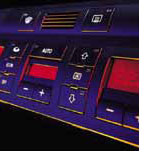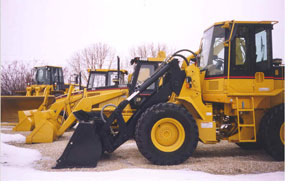| |
|
 |
 |
| Automotive & Transport (including construction machinery and auto parts manufacturing) |
 |
 |
 |
Now more than ever the vehicle industry, and consequently the automotive parts / systems suppliers are looking for opportunities to speed innovation, shorten product lifecycles, reduce costs, and collaborate with new partners... all on a global basis. Our international team is well capable of assisting these transformations.
We deliver leading vehicle capabilities in strategy, operations and technology to OEMs, suppliers, systems integrators, dealer groups and aftermarket retailers through in depth knowledge of all sides of the market. We provide leading edge thinking supported with exclusive research and best practices.
Siegle, Hu & Partners International offers a broad range of services within strategy, operations and business technology. |
- Globalization and new market entry
- Mergers & Acquisitions
- Merger integration
- Enterprise change management
- Market assessments
- Organizational restructuring
|
Market insights: Examples from our automotive & transport practice
The global market for automotive heating, ventilation and air conditioning: Constant pressure for new features
 Now that the majority of consumers regard HVAC as a 'must-have' in most segments in the major markets, several drivers now influence both OEM sourcing and supplier development as well as production approaches, some of them conflicting.
As a result, suppliers are constantly under pressure to deliver extra functionality and reduce the price of their components and systems. This is especially true in smaller car segments. The consolidated nature of the sector, with five global players chasing a stagnating amount of business, means that small differences in price or technology can mean the difference between winning and losing new business.
Overarching those concerns are the ongoing drive, in all major markets, to improve fuel consumption and reduce emissions. The European Union has already taken action to improve this situation, and other markets may follow.
There is no doubt that CO2 air conditioning is a "greener" solution than current technology, and that it will in most forms offer superior performance. However, the expectation is that the first applications of the new technology could cost as much as 30% more than current systems.
To further complicate the picture, it appears as of the first quarter of 2006 that North America will not adopt R744 in the near future. Therefore most suppliers can expect to have to conduct business on two fronts - carbon dioxide for Europe and Japan, HFCs in North America. And the cost pressures in the sector are not expected to ease.
World Heavy Construction Equipment: Continued expansion fueld by Asia and East Europe
Global demand to rise 4.9% annually through 2009
 Worldwide demand for heavy construction equipment is projected to rise 4.9 percent annually through 2009 to $110 billion. Growth will be supported by the expected continued expansion of the global economy, with high points including Eastern Europe, India, South America and a resurgent China. Within the Triad (i.e., North America, Japan and Europe), North America is expected to maintain its lead in terms of both the overall size of demand and growth potential, as the growth prospects for Japan and Western Europe will be hampered by a combination of negative demographic and structural trends, including aging populations and high levels of regulation and taxation.
|
China, Eastern Europe to pace non-Triad growth
In the non-Triad regions, future prospects are favorable in China, despite the recent weakening of the construction equipment market due to tightening credit policies. Construction equipment demand will continue to benefit from that nations aggressive industrialization efforts. Eastern Europe should also provide a strong base for construction equipment demand in the coming years. Eight East European countries -the Czech Republic, Estonia, Hungary, Latvia, Lithuania, Poland, Slovakia and Slovenia -entered the European Union (EU) in May 2004, and in April 2005 Romania and Bulgaria signed accession treaties to join the EU in 2007. Based on the economic turnarounds experienced by other countries joining the EU, expected infrastructure and economic improvements should help to strongly increase construction equipment demand going forward. Construction
machinery markets in Africa/Mideast are projected to climb at about the same pace as during the 1990s, with that regions continuing political turmoil preventing demand from rising as quickly as in other developing areas. |
| |
North America to lead gains in Triad
Within the Triad, 2004 was a year of recovery and growth for North America, where market expansion was driven by the explosive US real estate market. Most competitors saw sales and operating profits improve from years of stagnant sales and difficult profitability. Future growth will moderate somewhat but remain healthy in the region. In addition to.
improving fundamentals in most developing areas, the pace of growth in Western Europe is expected to increase somewhat, though remain below the global average. Demand for construction equipment in Japan will benefit from an improvement in fixed investment activity, but is expected to continue to be undercut by soft public sector investment. Most West European markets are expected to experience only moderate construction equipment growth going forward, with even strong performing Spain experience a tapering-off of demand. The strong Euro, combined with an aging population and other constraints all foreshadow moderate growth at best for the region. |
| |
 TOP TOP |
 |
|

